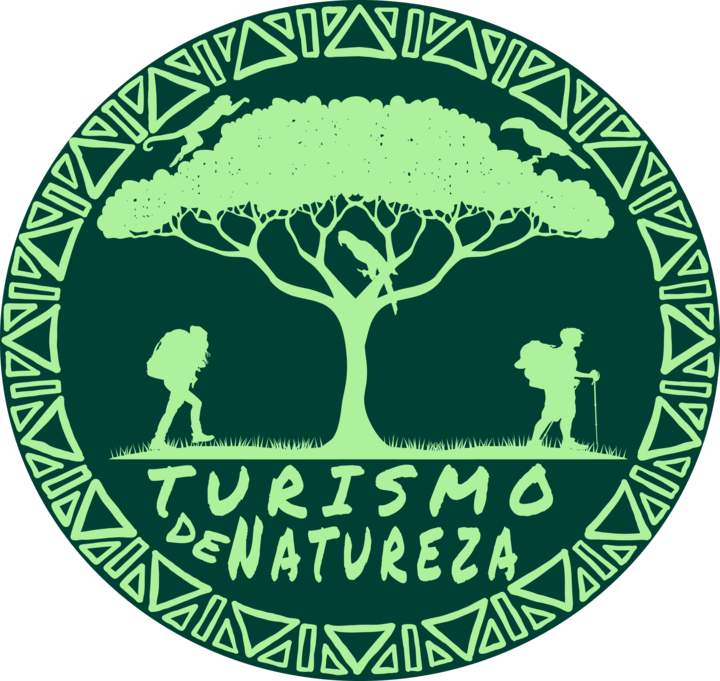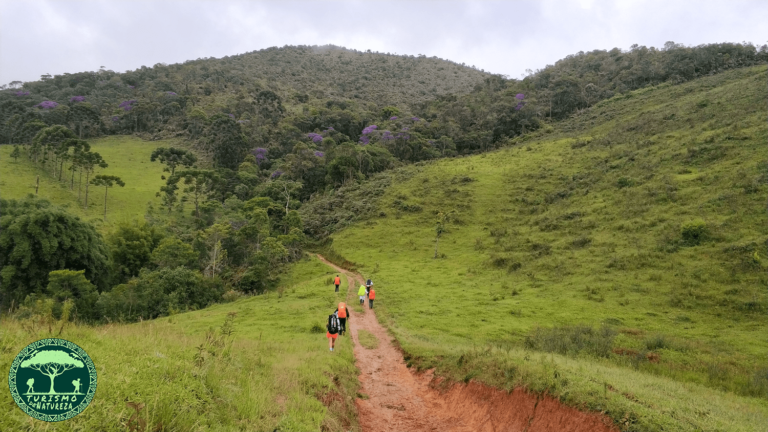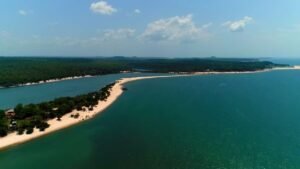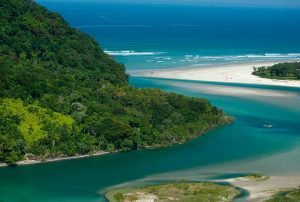The Travessia Trilha do Ouro (The Gold Trail Crossing), also known as Caminho de Mambucaba, is the most famous crossing of the Serra da Bocaina National Park. It is one of the most beautiful and classic in Brazil, recognized as Cultural and World Heritage by UNESCO.
The trail is approximately 50 km (31 miles) long and starts at the entrance to the park, in São José do Barreiro and ends in Mambucaba, in Angra dos Reis. On their way, adventurers find an incredible view, beautiful waterfalls, lots of fauna and flora. The trail path is traditionally done in 3 days and 2 nights.
Today, we will bring you a complete summary about the region and about this famous crossing.
About the Gold Trail (Trilha do Ouro)

Ilha do Ouro is one of the main trails in the states of Rio de Janeiro and São Paulo. It is one of the most popular trails for adventurers and fans of camping and ecotourism.
The region has remarkable places, so let’s talk a little more about each one of them:
- Serra da Bocaina National Park: with over 100,000 hectares of preserved Atlantic forest, the Serra da Bocaina National Park, in addition to hosting the Gold Trail, is an incredible place. With lots of incredible landscapes to be seen along the way;
- Santo Isidro Waterfall: it is the first waterfall seen by those who follow the Gold Trail. With a waterfall of more than 50 m (164 ft) and a sandy bottom, it is great for those who want to bathe;
- Cachoeira das Posses: another highlight of the trail, Cachoeira das Posses, has a drop of about 40 m (131 ft);
- Cachoeira do Veado: the most distant and famous waterfall in the park. The waterfall has 2 large waterfalls of more than 100 meters (328 ft) each.
- Mambucaba River or Mambucaba River: it rises at the top of Serra da Bocaina, in São José do Barreiro, descending towards the coast. It flows into the border between Paraty and Angra dos Reis, and follows most of the trail.
The climate in the region varies greatly depending on the time of year. So, it alternates between hot and rainy months, and cold and dry months, each season being very remarkable.
Being in the middle of the preserved Atlantic forest, you will find a lot of vegetation and also several animals that are part of the local fauna.
Mambucaba River or Mambucaba River: it rises at the top of Serra da Bocaina, in São José do Barreiro, descending towards the coast. It flows into the border between Paraty and Angra dos Reis, and follows most of the trail.
The climate in the region varies greatly depending on the time of year. So, it alternates between hot and rainy months, and cold and dry months, each season being very remarkable.
Being in the middle of the preserved Atlantic forest, you will find a lot of vegetation and also several animals that are part of the local fauna.
Technical Data of the Gold Trail (Trilha do Ouro)
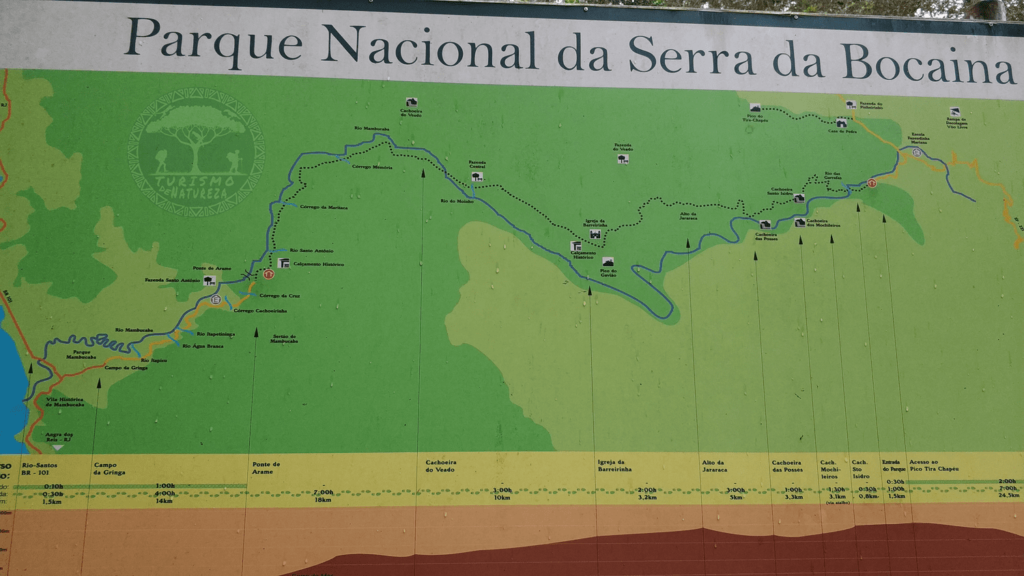
See below technical details about the Gold Trail (Trilha do Ouro )crossing:
- Category: Crossing (starts at a point and ends at a different one)
- Starting point: São José do Barreiro (São Paulo), at the Serra da Bocaina National Park entrance;
- Finishing place: Mambucaba, in the District of Angra dos Reis (Rio de Janeiro);
- Duration: 3 days and 2 nights
- Extension: Approximately 47 km (29 miles);
- Technical Difficulty: Easy;
- Physical Difficulty: Moderate;
- Type of Accommodation: Structured Camping (1st day) and Wild (2nd and 3rd day);
- Terrain: Dirt road with some elevations on the first day, paving stones, crossing rivers by bridge in some stretches (peduelas);
- Trail direction – Serra/Litoral (Mountains/Coast): The crossing is made following the upper part of the Serra park, descending towards the lower part of the coast. Most of the route is downhill.
Important: As seen above, the trail does not have major technical difficulties. But the physical preparation needs to be at least moderate. This is because it takes willingness and physical preparation to endure long walks, on average 15 ( 9 miles) to 20 km (12 miles) per day.
In addition, it is necessary to take into account that it is necessary to carry all the extra material that you are carrying in your backpack (food, tent and clothes) during the entire journey. In this way, beginners or people with little physical preparation will have great difficulties.
History of the Gold Trail
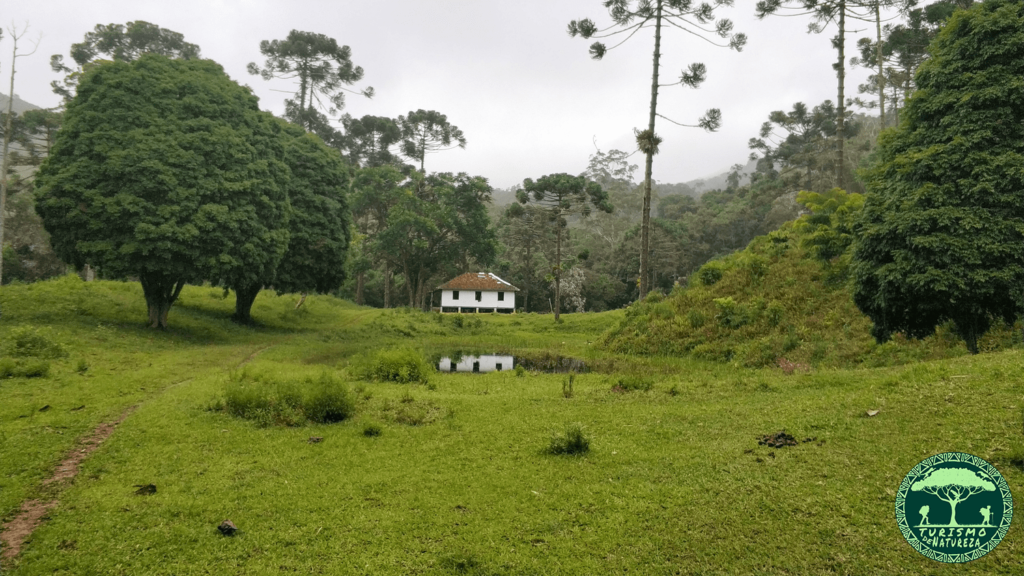
Like the Estrada Real, which connects Ouro Preto to Rio de Janeiro, the Trilha do Ouro was also used to facilitate the transportation of ores, mainly gold, which gave its name to the trail, during the period of Colonial Brazil.
According to legends, the route was initially opened by the Guaianazes Indians, and started to be used by the tropeiros and bandeirantes as an alternative route to the Estrada Real. In the end, it ended up being used a lot by coffee and ore smugglers.
In addition to the natural beauties, the trail is very famous for the stretch of centuries-old stones that form a kind of boardwalk in the middle of nature. Therefore, the region was nicknamed Pé-de-moleque.
Itineraries
To exemplify the script, we will show a crossing made. Let’s detail what happened on each day. So, if you do the trail, you can follow a similar scenario:
1 Day: Santo Isidro Waterfall and Posses Waterfall (Cachoeira Santo Isidro e Cachoeira das Posses)
On the first day, we started at the entrance to the park’s gatehouse. After that, we continue for about 2 hours, until we reach Cachoeira de Santo Isidro. At the waterfall, we stopped to bathe in the water and enjoy nature.
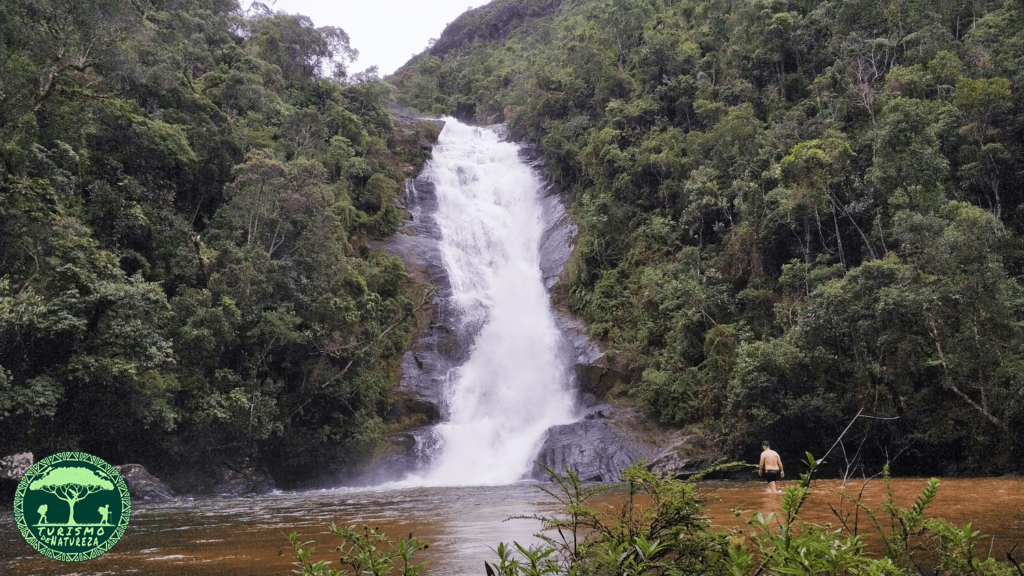
We continued for approximately 8 km (4 miles) until arriving at Cachoeira das Posses, where we also took a break for a bath and contemplation. After that, we continue for another 10 km ( 6 miles) to Camping da Barreirinha, where we spend the night. On this 1st day, the camping was done with all the ideal structure, and we simply loved it!
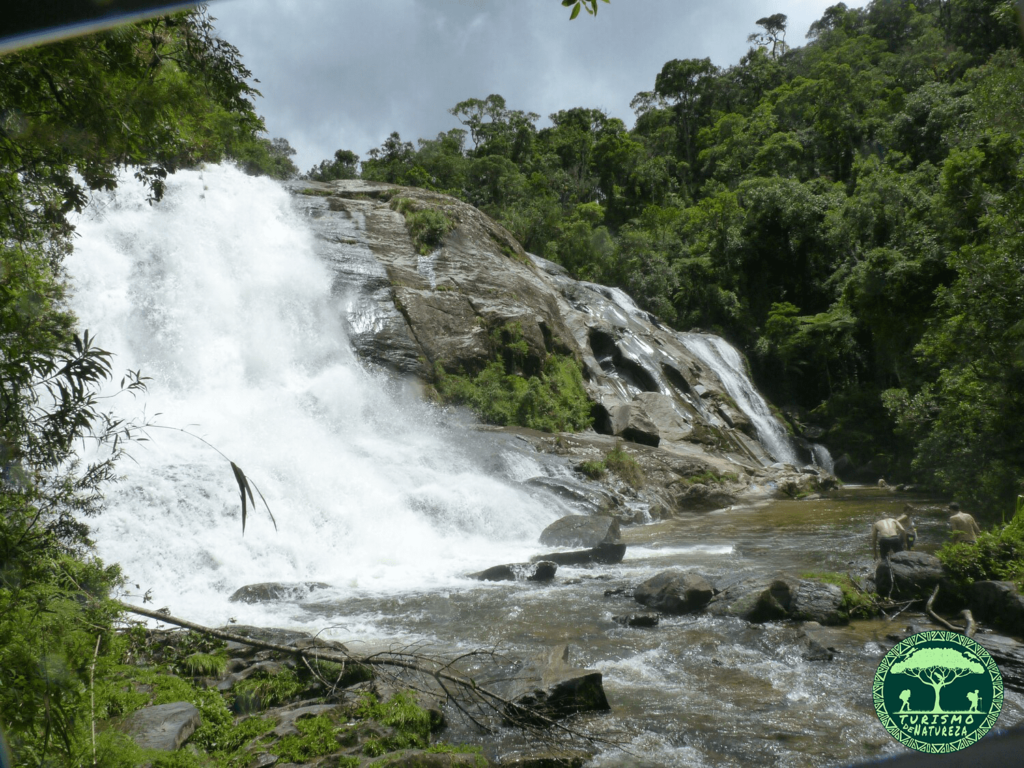
diary of the day
Crossing: 1/3
Saturday: 02/22
Route: approximately 20 km (12 miles)
- Beginning of the crossing;
- Arrival at the park entrance;
- Arrival at Santo Izidro Waterfall;
- Arrival at Cachoeira das Posses;
- Camping with structure.
* Camping da Barreirinha offers dormitories for hikers, so depending on your tour you can sleep in one of the available rooms, otherwise you can set up your camping tent.
2 Day: Cachoeira do Veado
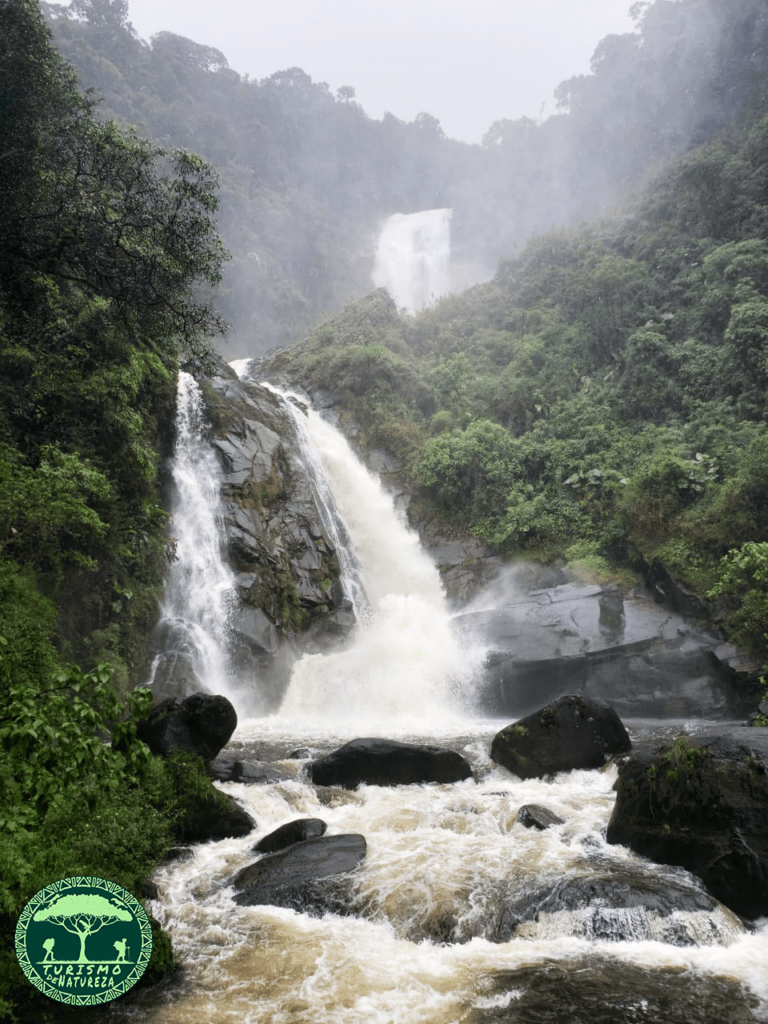
After waking up and having breakfast, we head towards Cachoeira do Veado. At this point, we pass by Pousada Dona Palmira. After that, we continued for a few kilometers and reached the paved path.
Historical fact: this paved road was built during the time of the Portuguese Crown, built by slaves. Passing by, it was possible to travel back in time.
We set up camp outdoors near the Ruins of Casa Queimada, near Cachoeira do Veado, where we spent the rest of the day enjoying the waterfall.
Diary of the day
Crossing: 2/3
Sunday: 2/23
Route: approximately 12 km (7 miles)
- Passage through the paved road;
- Arrival at Cachoeira do Veado;
- Wild camping.
Day 3: Stone Paving and Esguicho Waterfall (Calçamento de Pedra e Cachoeira do Esguicho)
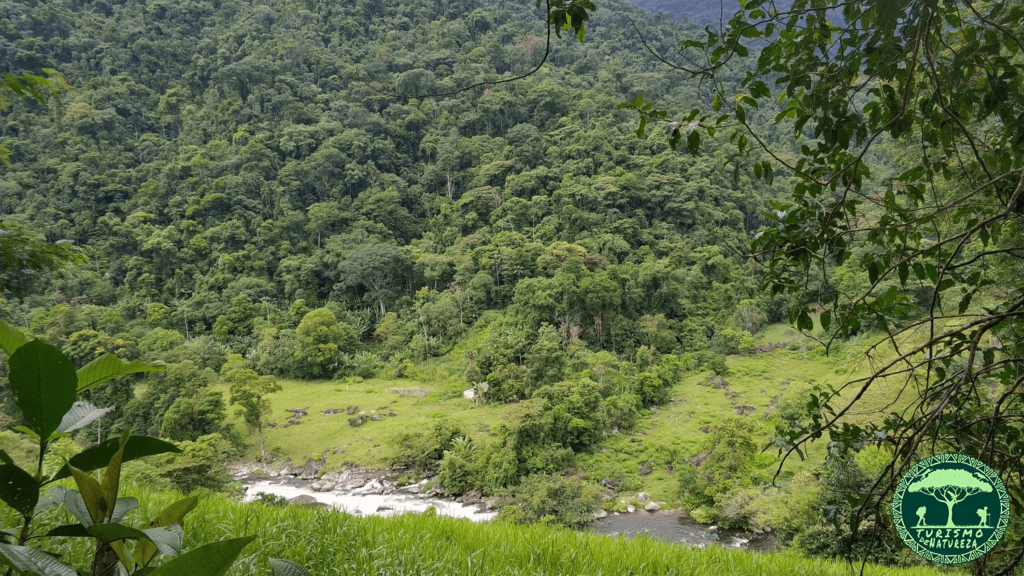
On the last day of the crossing, it was time to head to the rescue point. During the journey, we pass through a long stretch of stone pavement that requires a lot of attention due to its slippery floor, a non-slip boot on this stretch makes all the difference. Then we pass another waterfall, cross a bridge and a few kilometers ahead we reach the limits of the states of São Paulo and Rio de Janeiro.
After that, it was just a matter of following the final stretch in Rio and reaching the rescue point for extraction. The conclusion of the trail was at 15:00, arriving in São Paulo, on the Tietê Metro, at approximately 22:00.
Diary of the day
Crossing: 3/3
Monday: 02/24
Route: approximately 13 km (8 miles)
- Walk to the end of the crossing;
- Passage through the waterfall;
- End of the trail through Rio de Janeiro;
- Rescue for São Paulo;
- End of adventure and lots of story to tell.
How to get to São José do Barreiro and on the Gold Trail (Trilha do Ouro)?
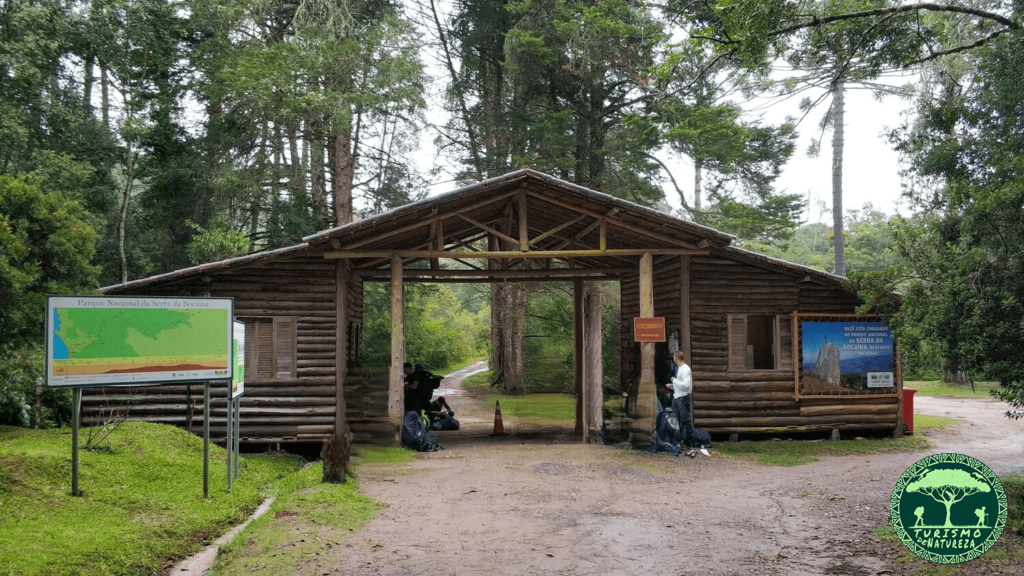
The Gold Trail is located between the cities of São José do Barreiro, in São Paulo, and Mambucaba, in Rio de Janeiro. Between the division of states is located the Serra da Bocaina National Park, where the Gold Trail is located.
The main access to São José do Barreiro is via Rodovia dos Tropeiros, on SP 068. By way of location, the city is about 210 km (130 miles) from Rio and about 270 km (167 miles) from São Paulo.
For those who visit Serra da Bocaina through tourist agencies, normally the meeting is at a subway station in São Paulo around 11:00 pm and they are expected to arrive in São José do Barreiro around 6:00 am and 7:00 am: 00 am.
Coming from Rio de Janeiro, you can take Presidente Dutra until reaching Barra Mansa, taking RJ 157 towards Bananal. After that, just head to São José do Barreiro.
Coming from São Paulo, take the Presidente Dutra Highway and enter Queluz. After passing through Areias, the destination is the main square of the city of São José do Barreiro.
From there to the Serra da Bocaina National Park, the path can be taken on foot or by car. In addition, leaving the city bus station, it is about 27 km (16 miles) to the park.
What does the tour offered by a tourist agency include?
In general, tourism agencies offer packages for this type of activity. They usually provide:
- Transportation from São Paulo to the park;
- Cadastur Eco Trail Guide;
- Monitors;
- Rescue and transport at the end of the trail;
- Structured camping on the first day*;
- Spot Gen 3, with real-time monitoring of the crossing via satellite.
**The structured camping has bathrooms, tables and drinking water, but as previously mentioned, this is only available on the first day. On the second and third day the camping is wild (without any type of structure). In addition, on the 1st day, hot baths are offered, but payment is made separately, costing around R$15.00.
When to do the Gold Trail ( Trilha do Ouro)?
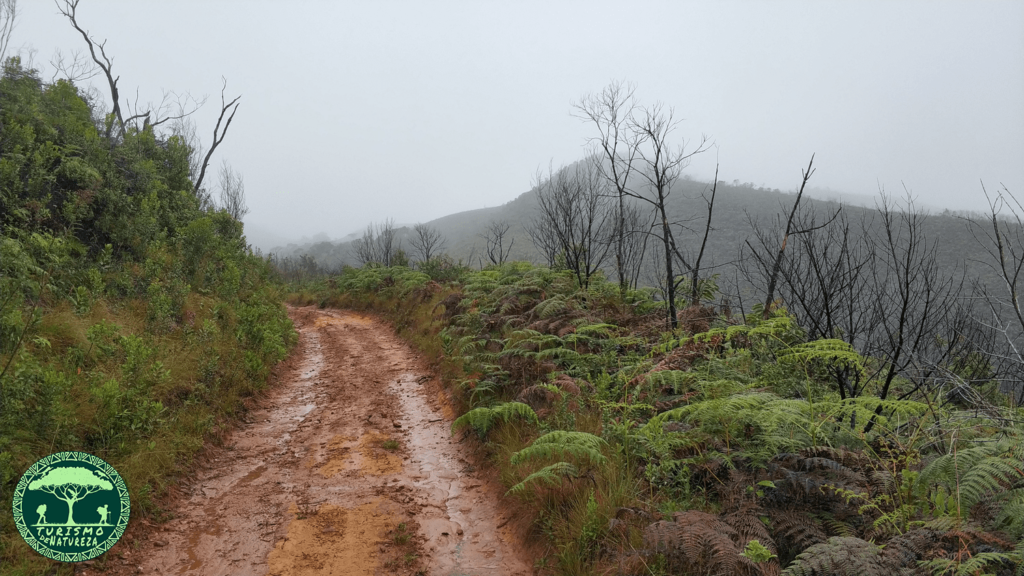
One of the most common questions about the Gold Trail is when is the best time to cross and camp. The best time to take advantage of the region’s climate and ensure a safer adventure is during the driest months.
Considering the region, the most recommended period for your adventure should be between the months of May and August. In the winter months there is little rainfall, quite different from the warmer months, where it usually rains a lot, making it difficult to move around and stay.
As it is a region of closed Atlantic forest, it tends to be humid even without rain. In need of some extra care.
As said, the dry months guarantee a certain advantage, however, if the objective is to dive in the waters, the cold months can make this process a little difficult.
To define the best time, you need to analyze which route you would like to follow. A quieter and cooler commute? A milder climate, but with a high chance of rain?
Late summer and early fall is one of the most recommended periods. Thus, it is possible to take advantage of the low chances of rain and still find not so cold waters.
Important: if you decide to travel in months with higher chances of rain, always remember to take a raincoat. Even if the sky is clear, the weather can easily change.
What to take on the Gold Trail (Trilha do Ouro)?
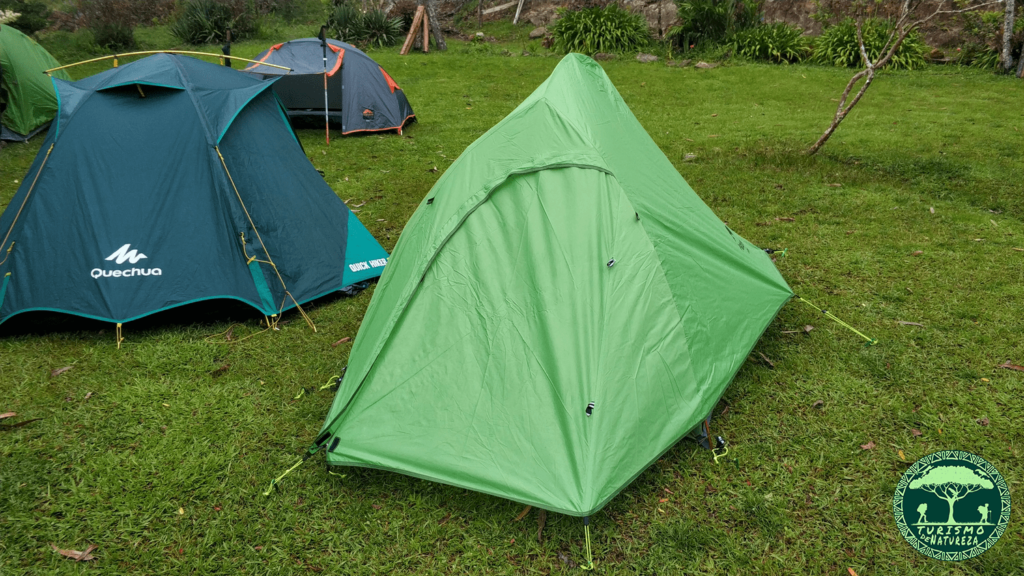
To camp during the Gold Trail crossing, some equipment and accessories are necessary. That’s why we’ve created a list of everything you need for your 3-day adventure. Check out!
Equipment/accessories
- Tents;
- Cargo backpack, with a capacity of 50 liters or more;
- Thermal insulation, very important on cold days;
- Sleeping bag;
- First aid kit;
- Sunblock;
- Repellent;
- Flashlights;
- Walking stick, this item is optional, but we highly recommend taking it along.
In addition, to eat, you need to bring some basic kitchen items. Check out!
- stove;
- match sticks;
- Candles (optional);
- Gas cartridge;
- Cookware set;
- Cutlery;
- Napkin;
- Toilet paper;
- Dishes;
- Cups;
Além disso, caso leve materiais descartáveis (ou não), é muito importante levar sacos de lixo para recolher qualquer material poluente descartado.
Food
Considering that crossing the gold trail lasts 3 days and two nights, it is necessary to take food for 3 breakfasts, 3 lunches, 3 snacks (at least) and 2 dinners. Thus, you will guarantee energy and disposition for the adventure.
You can’t forget to take lots of water. It is important to take bottles and canteens to hydrate during the trail.
Footwear and Clothing
Clothing and shoes also need to be comfortable and carefully thought out. We recommend the following items:
- Trail boot;
- Long pants that are comfortable, flexible and resistant. Bermuda shorts are to be avoided, your shins will thank you;
- Lightweight, long-sleeved T-shirts made from an easy-drying material;
- Extra pairs of socks and underwear;
- Cap;
- Sunglasses;
- Blouses, gloves, caps and windproof jackets for cold days;
- Face and bath towels;
- Raincoat, for rainy days.
Important: take several changes of clothes to change during the trip, especially after diving. Staying warm and cool is key!
Final considerations
As we show throughout the text, the Gold Trail (Trilha do Ouro) is a great adventure, which will bring a lot of emotion to the adventurers. So, if you are a fan of challenges, this route is certainly for you.
Following our tips, the adventure will be even better. So, before starting Travessia Trilha do Ouro, make sure you remember to take everything. With everything in place, all that’s left is the fun and unique experience that is this amazing place.
